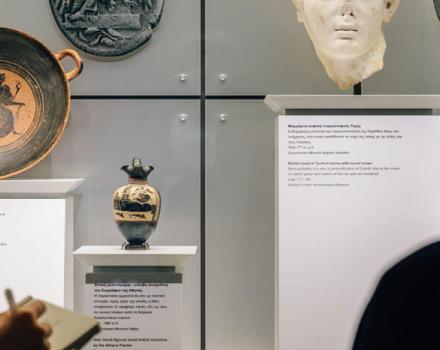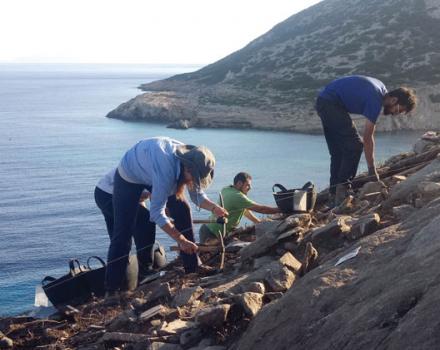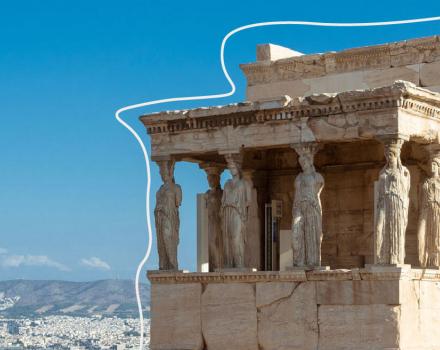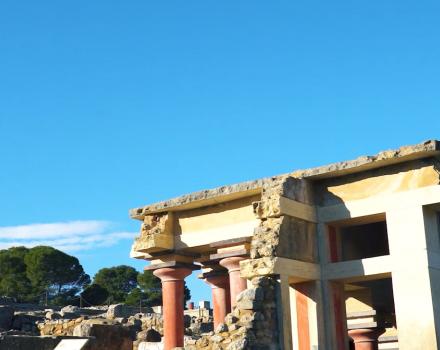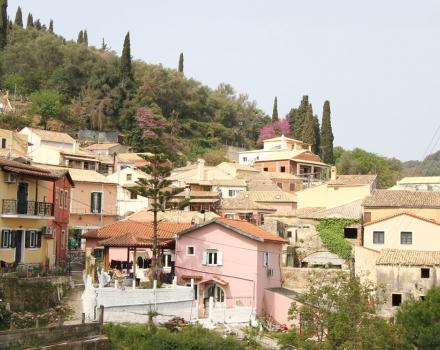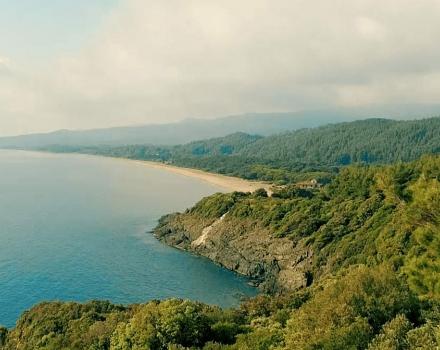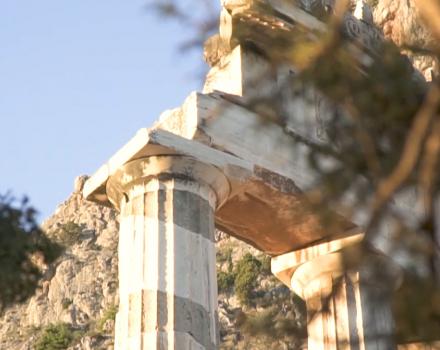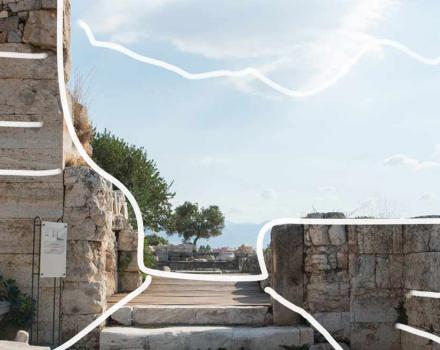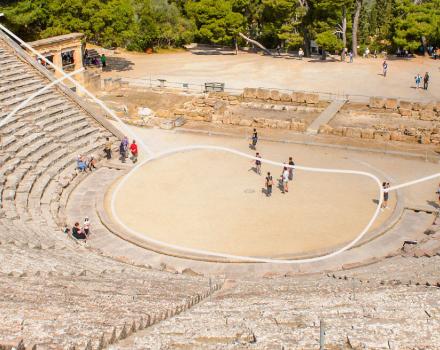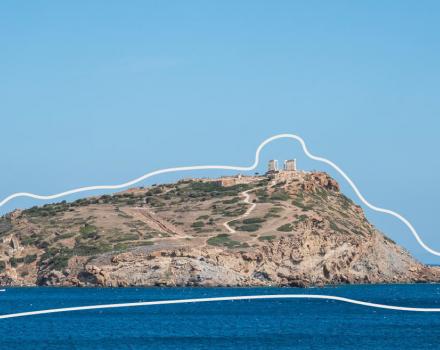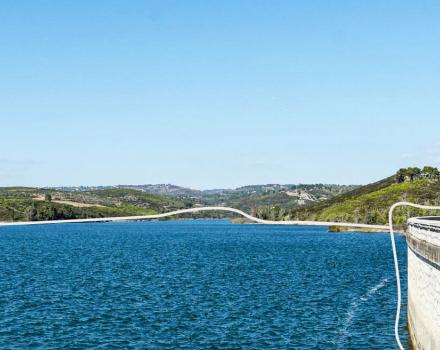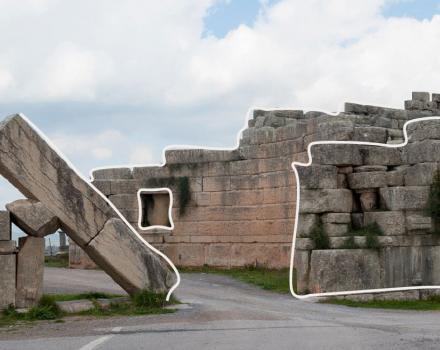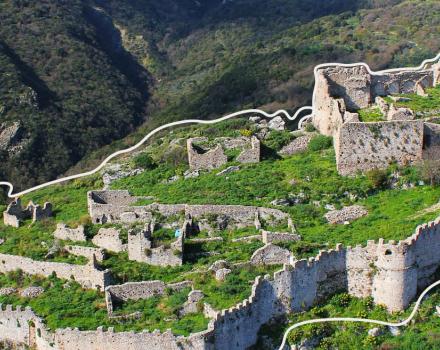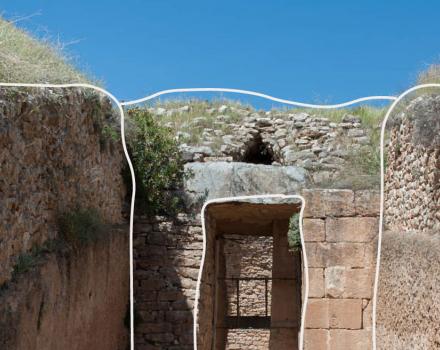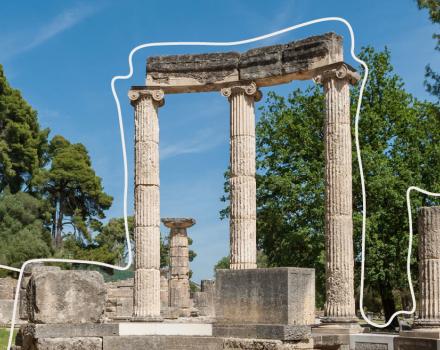Artworks of top Greek painters, some of them we haven’t seen before are hosted by the exhibition “Frames of Reference” at Benaki Museum (Pireos str. building). An exhibition of international standards held on the occasion of the 90th anniversary of the Bank of Greece, presenting artworks that adorn the halls or came out from its treasury. The purpose is to give to the visitor the opportunity to see how the aspects of Greek cultural identity were depicted through artworks inspired by antiquity, landscape and daily world. Topics that make up the three sections of the exhibition.
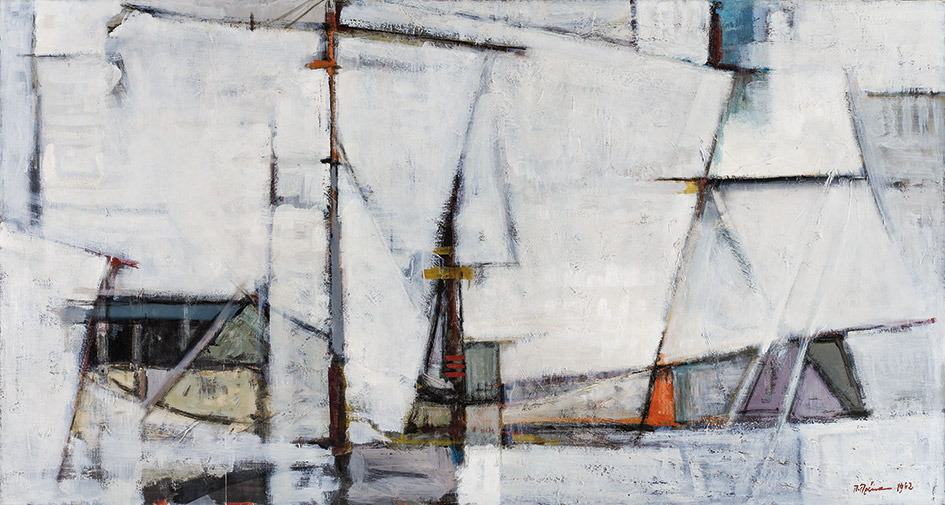
Having the Centre for Culture, Research and Documentation of the Bank of Greece as coordinator, this enormous project, which presents 160 out of 3000 collection’s pieces, needs a long time to get prepared. Charis Kanellopoulou, art historian and the exhibition’s curator, was studying intensively the collection since 2015 in order to ended up in artworks selection. Artworks are mainly about representational painting and printmaking having the signature of important artists. Amongst them are the older Konstantinos Volanakis, Ioannis Altamouras, Nikolaos Gyzis, Georgios Iakovidis, Konstantinos Maleas (19th - early 20th century) but also by such later artists as such as Yannis Tsarouchis, Paris Prekas, Spyros Vassiliou, Panayiotis Tetsis and others.
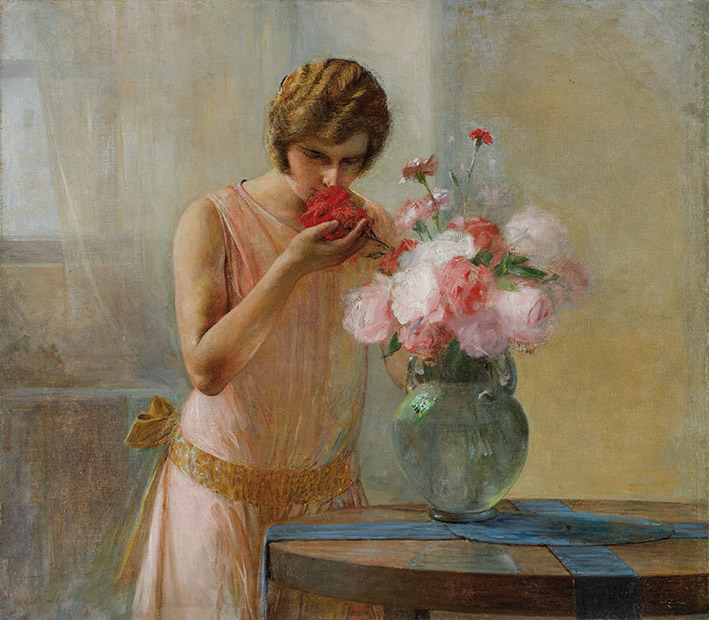
Antiquity
The artworks are presented in 16 specially designed halls of different colors (dull green -olive, deep red, gray ciel, deep blue, etc.), having the first glimpse dedicated to antiquity. The artwork welcomes the visitor is "Pallas Athena", a drawing made by Nikolaos Gyzis in 1887 for the banner of the University of Athens. Taking for granted that the ancient world and classical thought were favorite subjects of artists since the 19th century, the section of antiquity hosts important artworks depicting mythical figures and mythological scenes. Amongst them are the paintings "Harmony" (1893) and "Eros and Centaur" (1896-98) by Nicholas Gyzis and the "Death of Achilles" (1870-80) by Ioannis Doukas.
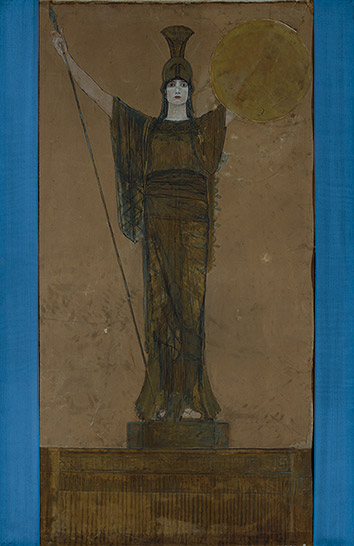
Besides them, we see archaeological landscapes while the ancient monuments and their remnants functioned for the artists as an ideal and irrefutable proof confirming the uninterrupted continuity between ancient and modern Greece. The theme is represented with watercolor paintings by Vicenzo Lanza including "Lysicrates Monument" and "Parthenon" (ca. 1870), printings of Dimitrios Galanis, "Leda and the Swan" (1936) and much more. In this section we also meet the unique sculpture of the exhibition: Yiannoulis Chalepas' stunning head of Satyr.
Daily world
In the last quarter of the 19th century, the historical painting, which was born and accompanied the period of the Greek struggle and the depreciation of the Ottoman slavery, starts to “decline”. Ethography is becoming one of the main themes of modern Greek painting, and "from the point of style, Greek artists begin to approach the movements of Impressionism and Realism, releasing their writing", as Ms. Kanellopoulou mentions, from the "certain" academic frame". Searches are focused on the structure and development of the New Greek society, with artworks describing everyday life (customs and traditions, traditional occupations, folklore references, family moments, works in the countryside).
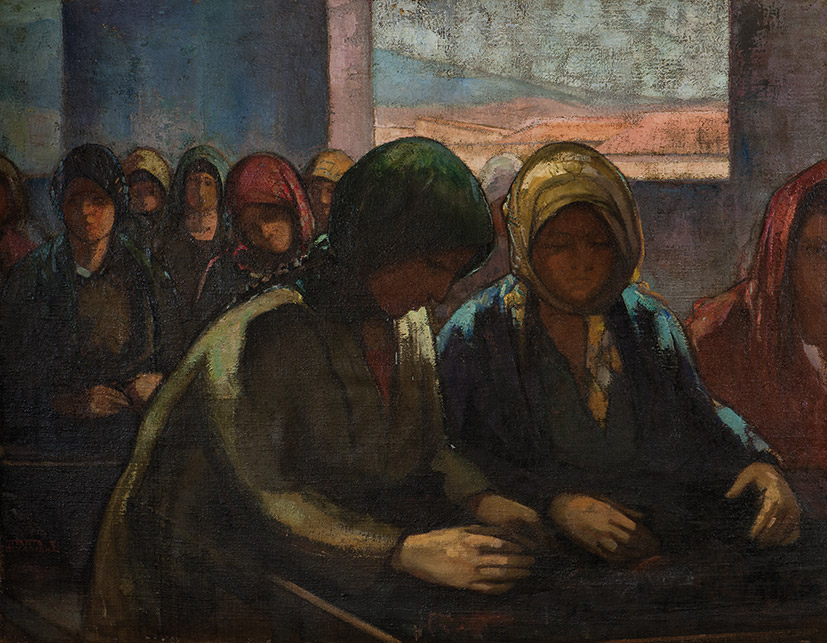
"The exhibition presents 160 out of 3000 masterpieces of the Collection of the Bank of Greece which has unique visual and research value. Amongst them are some that we haven’t seen before.
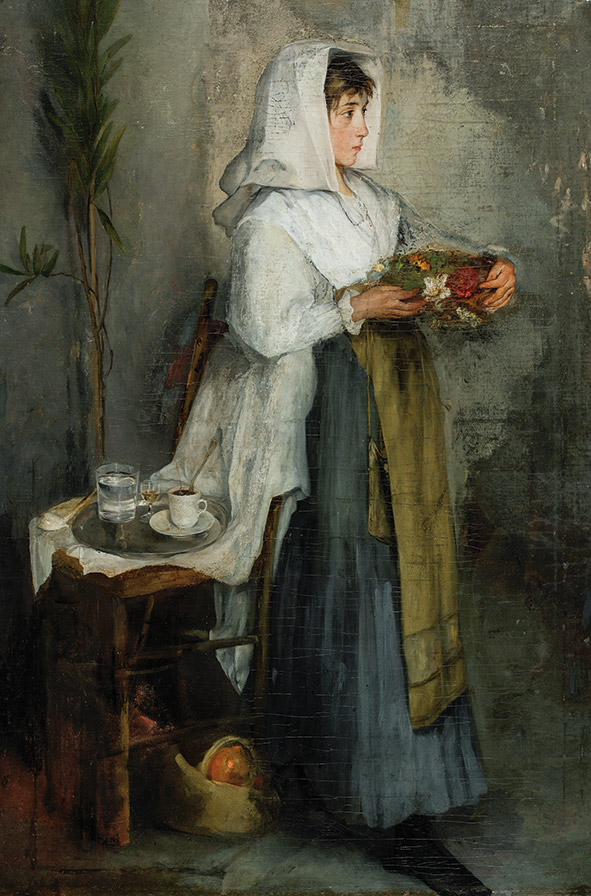
This section is represented by painters as, Georgios Iakovidis, Spyros Vikatos, Ioannis Zacharias, Thaleia Flora-Karavia, Nikos Fotakis, Georgios Prokopiou, Orestis Kanellis, Georgios Gounaropoulos, Yannis Tsarouchis etc. Important is also the presence of the printmakers as Yannis Kefallinos, Tassos A. (Alevizos) and Alexandros Korogiannakis, with well –known artworks depicted daily labor scenes (fishermen, women in harvest etc).
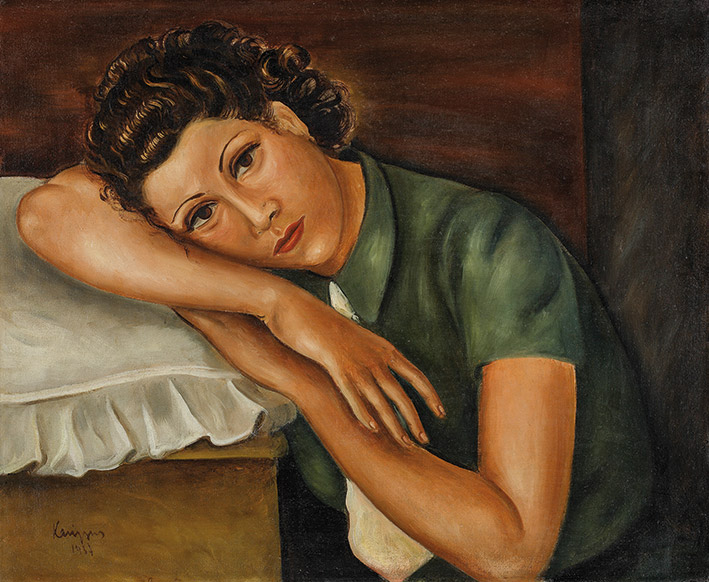
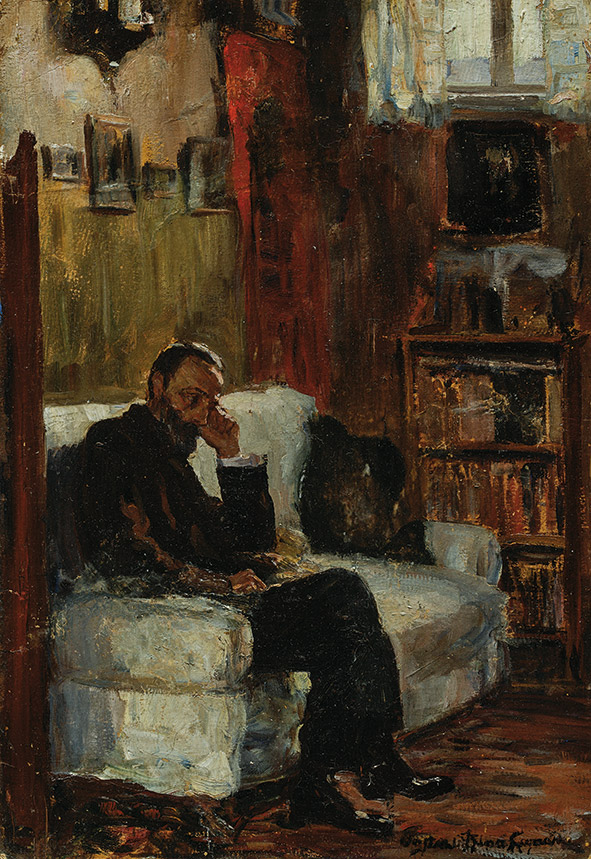
Landscape
In the section dedicated to landscape, the seascape possesses a special placement. The Collection of the Bank of Greece has a series of artworks by the important seascape painters, which highlights the importance of marine themes depicting in 19th century painting. The father of the Greek seascape, Konstantinos Volanakis has his own hall, "dressed" in a deep blue color, where the visitor sees nine works of the artist, many of which have great dimensions. Amongst them is the emblematic painting "The arrival of Karaiskakis at Faliro" (1895), for the transportation of which, a whole business was organized. With “giant” dimensions (1,5 m high, 2,73 m wide) and weight of 150 kilos, the project went down by a crane from the tallest floor of the central building of the Bank of Greece in Athens, Sunday and late at night so there is no traffic.
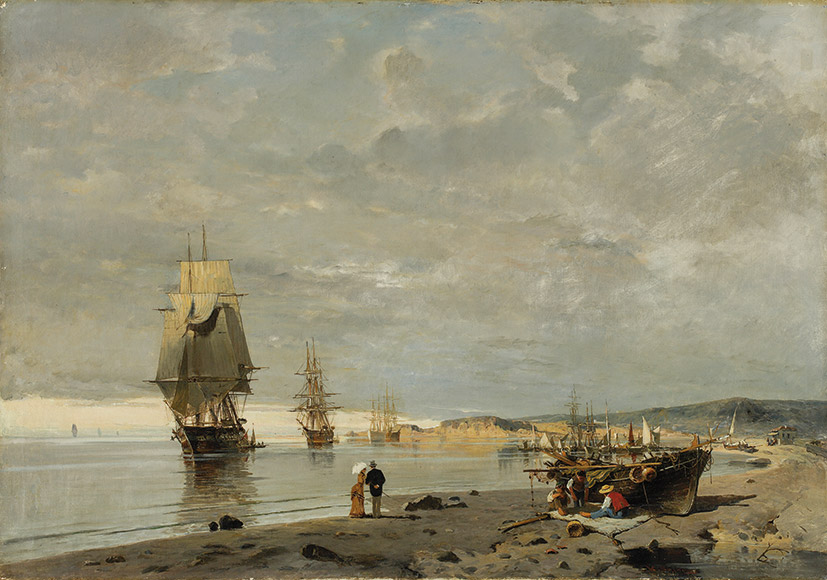
In the landscape section, many artists are hosted as Emilios Prosalentis, Ioannis Altamouras, Vasileios Chatzis, Kontantinos Maleas, Spyros Papaloukas, Photis Kontoglou, Agenor Asteriades, Nikos Chatzikyriakou – Ghikas, Spyros Vassiliou, Panayiotis Tetsis and many others, while the presence of modern artists is also important.
"An entire business was organized to went down by a crane the huge painting "The arrival of Karaiskakis at Faliro" by Konstantinos Volanakis from the top floor of the Bank of Greece's main building in Athens
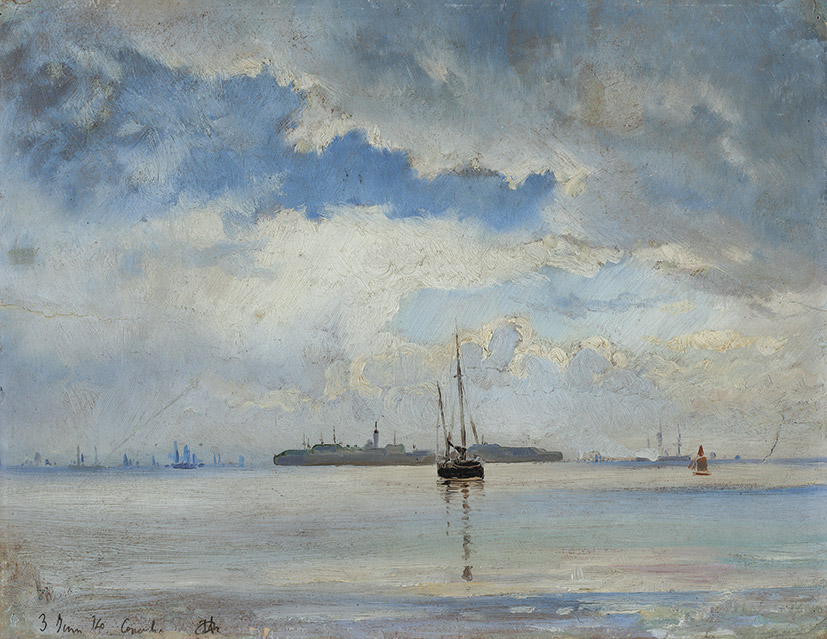
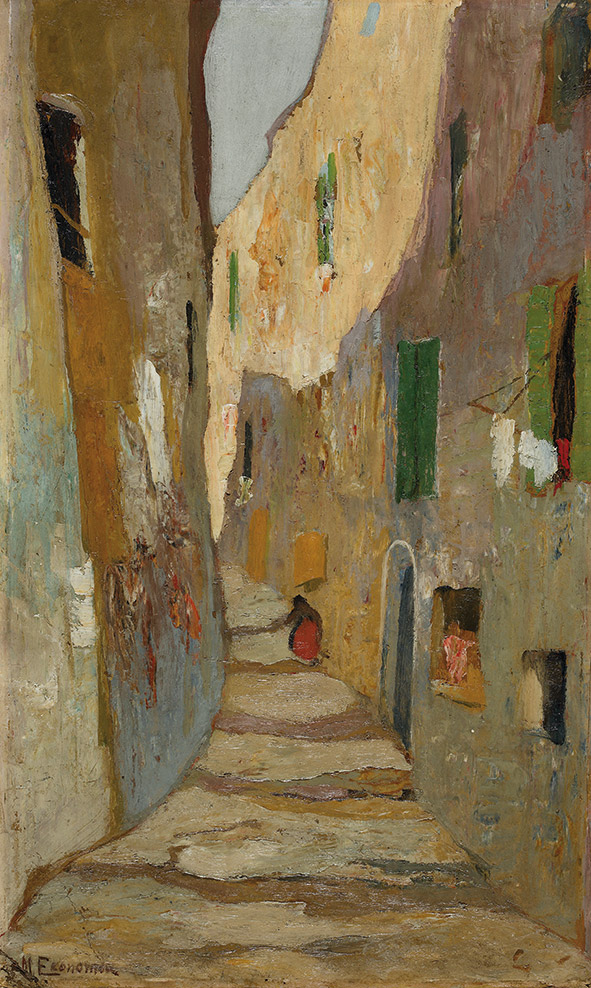
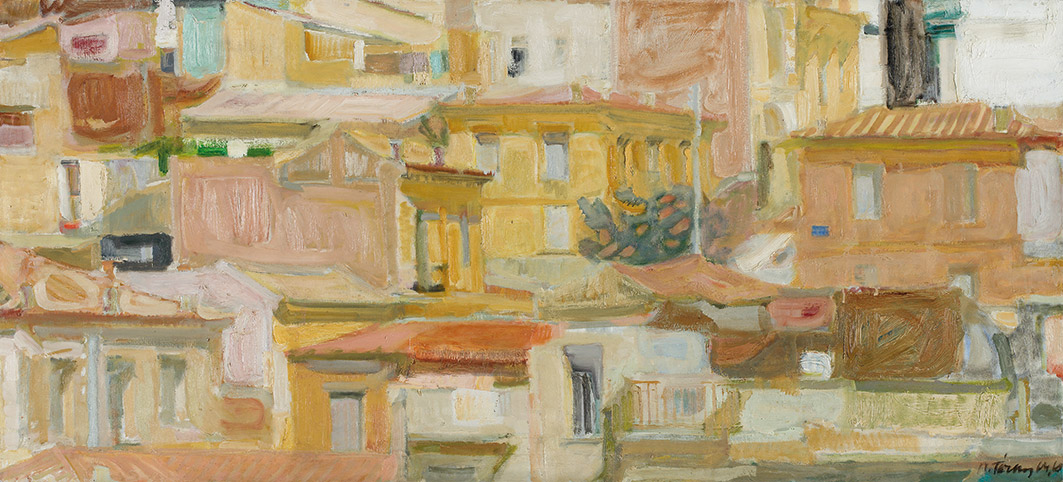
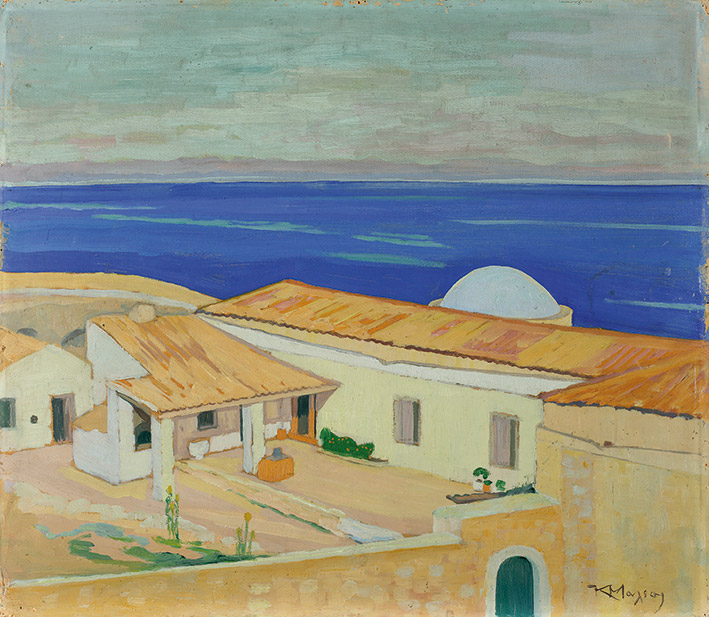
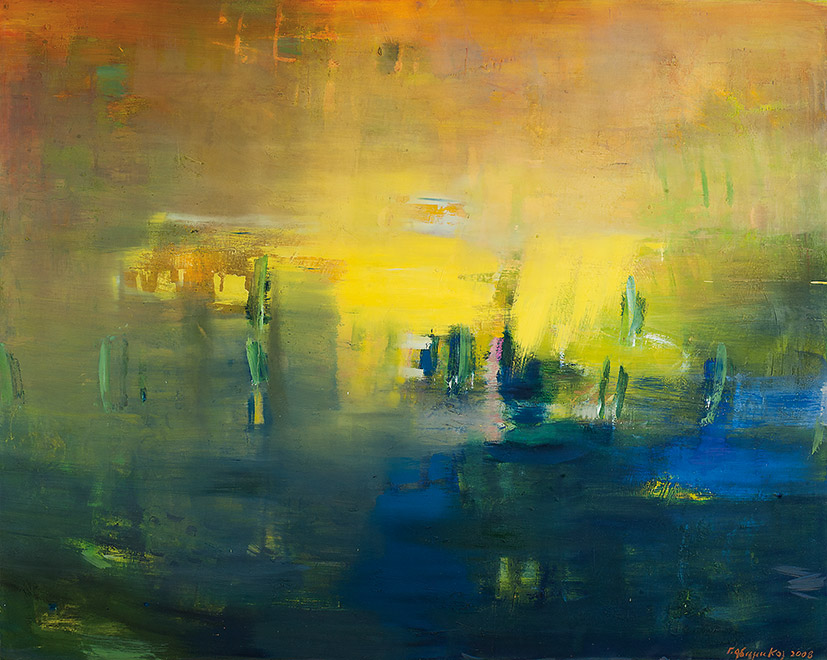
Unique Value
The wealth of the Bank of Greece collection, the effort of its organization, as evidenced by the crane transport of Volanakis' work and the long preparation of the exhibition, give an idea of what the visitor is going to see. The exhibition is an attempt by the Bank of Greece to acquire a more extrovert profile, while at the same time showing that by creating this unique collection (since 1928) it contributes to the preservation and promotion of domestic visual arts production and cultural heritage. The report shows that "the Bank does not only combine with the gray color and the bankers we have in our minds" said the director of the Center for Culture, as the director of the Centre for Culture, Research and Documentation of the Bank of Greece, Panagiotis Panagakis said. An indicative stateme of how important is for such an organization to recognize its mission as a custodian of history.
Information: Exhibition “ Frames of References”, Benaki Museum, Pireos str. 138 & Andronikou, duration until May 20 2018, Exhibition’ s web site: https://museum.bankofgreece.gr/topoianaforas
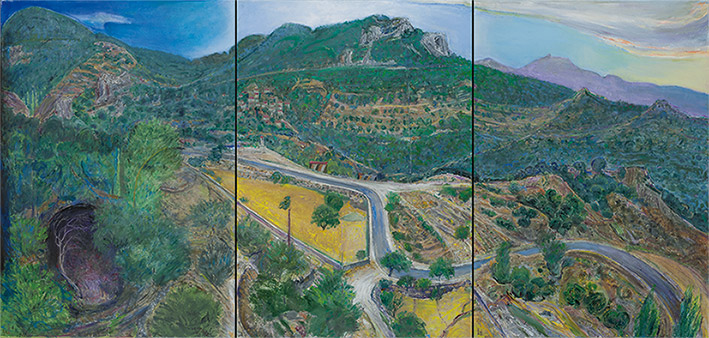
To be noted that the exhibition accompanies with an exceptional catalogue. It should also be said that it will run until May 20th, which means that those who wish to see an exceptional presentation of Modern Greek art must be hurried.
